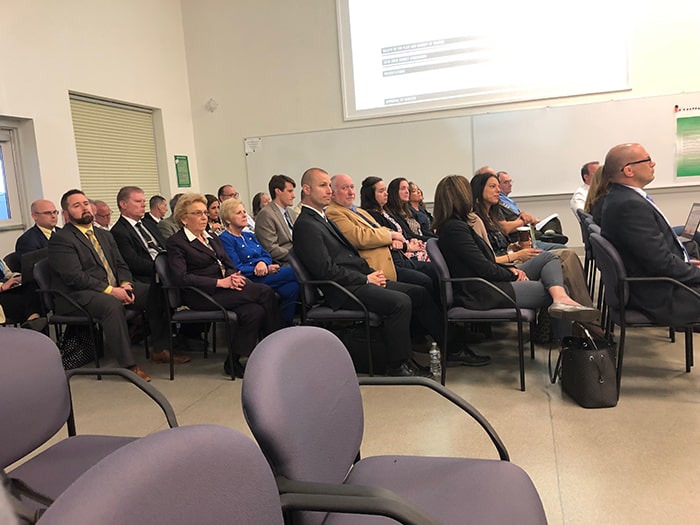
BRICK – Larger classroom sizes. A reduced staff. Combined special education classes. A reduction in the number of buses and bus routes. Fewer after-school clubs.
These are some of the realities of the 2019-2020 school year budget that came to light after Board of Education members reviewed budget documents shared by district business administrator James Edwards.
The April 11 Board of Education meeting began with a budget discussion that gave board members an opportunity to ask questions about the proposed budget. Half the room was filled with school principals, budget managers and directors who were there in case clarification was needed, said Superintendent Gerard Dalton.
All of those who prepared budgets were given guidance from central administration, and each had to present a line-by-line rationale for their decisions regarding areas to be cut, Dalton said.
He said the administration had reviewed current and projected class sizes and had a discussion on how to minimize the impact on student learning while balancing other needs. Some of those needs include capital projects, some new buses, and servicing special education students by providing a better education in-district than they’d be getting out-of-district.

Director of Human Resources Sean Cranston said that some 47.6 positions would be eliminated for the 2019-2020 school year, which includes 31 general education positions, special education positions, five custodial positions and five teacher aide positions.
“We are eliminating positions, but there are some positions we need to have in order to bring students back into our district or to properly educate those who are here,” Dalton said.
“Class sizes are going to go up,” said Director of Planning Research and Evaluation Susan McNamara. “Some kindergarten classes will have as many as 29 children,” while many other elementary school classes in the district would average about 28 students, she said.
Projected classroom sizes in the high schools would be around 19 students, with a state average of about 16 in a classroom, she said.
The Professional Development line item has increased in the budget because teachers would need to be provided with support and instructional strategies for teaching larger class sizes, McNamara said.
The loss of state aid for this upcoming year is roughly $2.8 million, which is the second of seven years when the district stands to cumulatively lose $21 million due to a cut in adjustment aid to districts that are considered to be overfunded.
The State Department of Education says that the Brick School district is $22 million below its fair share, which determines how much each school district should be spending per pupil in various categories and grades.
The adequacy budget of a district – or a calculation that is determined by comparing the budget to the amount of money the district is actually spending in order to determine that the district is providing a “Thorough and Efficient Education,” – is required by the state constitution, Edwards explained.
The state reviews the adequacy budget every three years, and this year it increased about $1 billion statewide, or $566 per student.
“The state is adding $206 million to the pot for education funding, which means the additional $800 million has to come from the local fair share,” Edwards said.
“So the local fair share has increased from $112 million 10 years ago to $142 million today, something with which the state has not kept pace,” he said.
With only a 2 percent cap available, the Brick school district has no mechanism to make up for the shortfall, making the district unable to provide a Thorough and Efficient Education, he said. Districts are required to keep most increases to no more than 2 percent more than previous years.
The funding gap in Brick was created during years the tax levy could have been raised but was not, Edwards added.
Board President Stephanie Wohlrab said the district is losing $2.8 million but would be raising some $2.2 million through the state-mandated 2 percent tax levy.
Edwards recommends using a banked cap of $756,499 and a $919,730 health care adjustment that is available.
“What we heard from the county [Superintendent of Schools] is, how do districts like Brick expect the state’s help in providing more state aid when you have funding mechanisms available to you that you’re not fully utilizing?” Edwards said.
A public hearing on the budget is scheduled for May 2 at 7 p.m at the Brick High School auditorium.






